I had the day off on Sunday and although it was cold and foggy and the thought of a relaxing day reading and drinking tea sounded good, I couldn’t pass up the opportunity to explore more of this incredible country side. I jumped in with a group of students and researchers from Toolik that were going for a hike up Atigun Gulch.
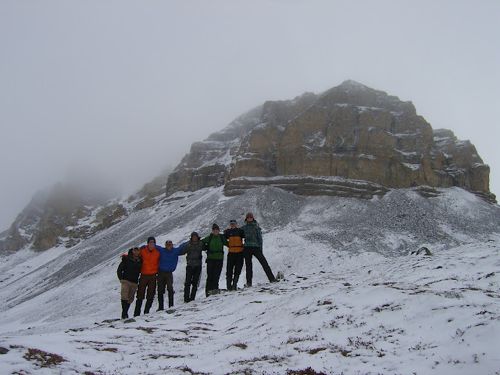
The hike was just over 7 miles round trip and followed the Atigun river to a water fall. The start of the hike is just north of the Brooks Range about a 30 minute drive from Toolik. The valley was incredibly beautiful as you can see in the photos below.
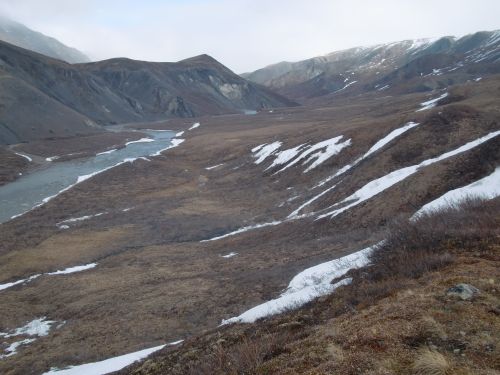
The south side of the valley was full of rock spires that were shrouded in fog.
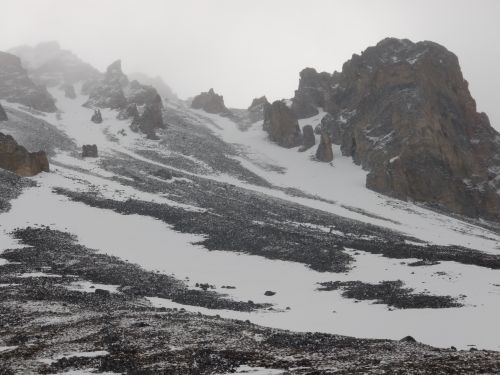
Along the way we saw some Dall sheep (Ovis dalli), which look similar (except in coat color) to the Big Horn Sheep that we have in Colorado. In the winter, the Dall sheep move down lower on the cliffs and the white coat helps them camouflage, as they are more susceptible to predation. In the summer, their coat stays white, but they move up high on the steep rocky slopes making it much more difficult for predators to chase them down.

We also saw some interesting Crinoid fossils along the way. Crinoids are marine animals that are part of the phylum Echinodermata. Hey, Biology students, what other animals are in the phylum Echinodermata? There are Crinoid species still around today, but these fossils are at least 126 million years old, which is the age of the Brooks Range. These species were once at the bottom of the an marine environment, then buried and became part of the rock that was uplifted and eroded so that we can see them.
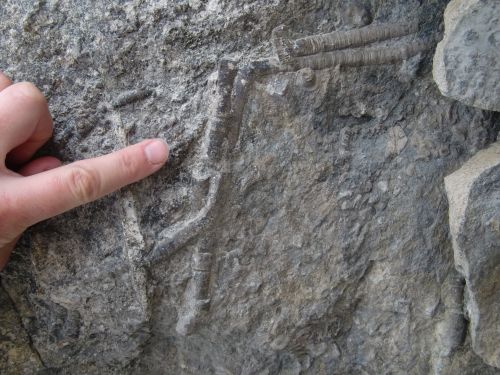
The waterfall was just inside the boundary of the Arctic National Wildlife Refuge (ANWR), a 19 million acre area in the Northeast corner of Alaska. ANWR is the largest wildlife refuge in the United States and is home to 42 fish species, 37 land mammals, eight marine mammals, and more than 200 migratory and resident bird species, including caribou, grizzly and polar bears, ducks, geese, birds, wolves, and muskoxen (http://arctic.fws.gov).
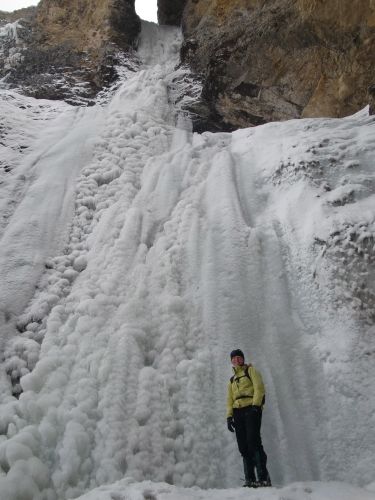
And of course we couldn’t completely leave science behind. Jason decided to take a water sample from just below the falls to take back to the lab. Since we did not have a proper sampling bottle he used a mini nalgene and gave it 7 pre-rinses instead of the normal 3. A pre-rinse involves filling up the bottle with your sample water, closing the top, shaking around several times, pouring the water out downstream of where you are sampling and repeating this process.
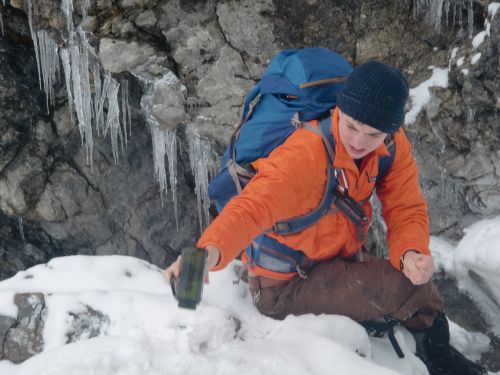
Another great day in the Arctic!
Question to Ponder
Who’s tracks are these? We saw this animal and its tracks on our hike.
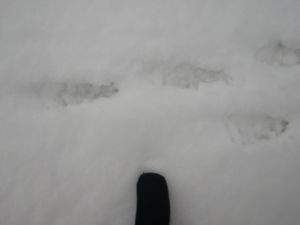


Comments